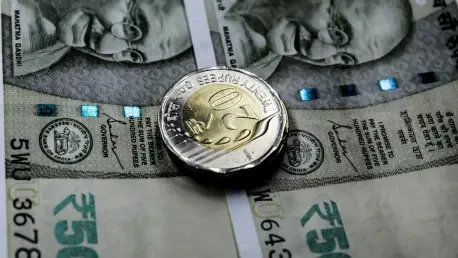The global silver market is facing an extraordinary crisis, with a persistent mismatch between supply and demand sending prices soaring to levels not seen in years, creating what many are calling a “silver squeeze.” This isn’t a temporary blip on the radar but a deep-rooted issue stemming from structural deficits that have plagued the industry for nearly a decade. Silver holds a unique position as both a critical industrial component and a sought-after safe-haven asset, amplifying the consequences of this imbalance across multiple sectors. From green technology firms to financial investors, the ripple effects are being felt worldwide, raising urgent questions about how such a vital resource can be secured. Supply chain disruptions, logistical bottlenecks, and skyrocketing costs are not just numbers on a balance sheet—they’re actively reshaping how industries operate and how economies plan for a sustainable future. This unfolding situation demands a closer look at the forces driving the squeeze, the chaos in supply networks, and the broader implications for global markets. As the world grapples with these challenges, the silver market stands at a crossroads, poised between short-term volatility and long-term transformation.
Unpacking the Core of the Silver Crisis
The silver market’s current turmoil is anchored in a structural deficit that has persisted for seven consecutive years, where the demand for this precious metal consistently outpaces the supply from mining operations and recycling efforts. This imbalance has propelled silver prices to historic highs, with analysts speculating that further surges could be on the horizon if conditions don’t improve. A key factor behind this scarcity is the chronic underinvestment in exploration and new mining projects, coupled with declining ore quality at existing sites. Additionally, silver is often extracted as a byproduct of other metals like gold or copper, which limits the ability to ramp up production quickly in response to market needs. This entrenched supply constraint has created a fragile foundation, leaving the industry ill-equipped to handle sudden spikes in demand or unexpected disruptions. The consequences are evident in the tightening availability of physical silver, pushing stakeholders to rethink strategies for sourcing and allocation in a market that shows no immediate signs of relief.
Beyond supply limitations, the demand for silver is surging from dual fronts, intensifying the squeeze. Industrially, silver’s unparalleled electrical conductivity makes it indispensable for cutting-edge technologies such as solar photovoltaic cells, electric vehicles, and 5G infrastructure, sectors that are expanding rapidly as the world shifts toward sustainable energy solutions. Simultaneously, investment demand has skyrocketed, driven by geopolitical uncertainties, inflationary pressures, and a growing preference for safe-haven assets amid volatile economic conditions. This convergence of industrial necessity and financial interest has created a perfect storm, where every ounce of silver is fiercely contested. The resulting pressure on the market underscores a critical challenge: balancing the needs of technology-driven industries with the desires of investors seeking stability, all while supply struggles to catch up. This dynamic is at the heart of why the silver squeeze has become such a pervasive issue across global economies.
Navigating Supply Chain Disruptions
The physical movement of silver from mines to end-users has turned into a logistical quagmire, exacerbating the effects of the ongoing supply squeeze. With shipping costs climbing to unprecedented levels and delays becoming the norm, transporting this heavy, high-value commodity is more challenging than ever. The metal’s bulk and stringent security requirements often necessitate expensive options like air freight, further inflating expenses. Major trading hubs in cities like London and New York are reporting alarmingly low inventory levels, a situation worsened by large-scale shipments prompted by concerns over potential trade barriers, such as US tariffs. These bottlenecks are not merely inconveniences but symptoms of a deeper physical shortage that hinders the smooth flow of silver through global markets. As a result, businesses reliant on timely deliveries are forced to contend with uncertainty, often resorting to costly workarounds or facing production delays that ripple through their operations.
Adding to the chaos is the breakdown in traditional lending markets for physical silver among financial institutions, a critical mechanism for maintaining market liquidity. Lease rates for borrowing silver have reached staggering heights, in some cases exceeding levels that make transactions prohibitive. This reflects an acute scarcity at the wholesale level, where even banks and large traders are hesitant to part with their holdings, signaling a profound lack of accessible metal. Such dysfunction disrupts the ability of refiners, manufacturers, and other stakeholders to secure the silver they need, creating a cascading effect down the supply chain. The impact is felt not just in delayed orders but in the broader confidence in the market’s ability to function under stress. This lending crisis highlights how interconnected and fragile the silver supply network has become, posing a significant barrier to stabilizing the current squeeze.
Corporate Impacts: Gains and Struggles
The silver squeeze is carving a clear divide among corporations, with outcomes varying sharply depending on their role in the market. Primary silver producers are positioned to capitalize on the rising prices, potentially reaping substantial profits as the value of their output climbs. However, these companies are not without challenges, as they grapple with escalating operational costs and the reality of extracting lower-grade ores, which reduces efficiency and increases expenses. Diversified mining firms with silver as a secondary focus may see a modest uplift in their precious metals divisions, though their broader portfolios dilute the overall impact. For these entities, the squeeze offers a financial opportunity, but it comes with the burden of navigating an increasingly complex production landscape where quick adaptation is often out of reach. The benefits, while notable, are tempered by the structural hurdles inherent in scaling up output to meet soaring demand.
In stark contrast, industries that rely on silver as a key input are bearing the brunt of the crisis, facing significant headwinds that threaten their bottom lines. Solar panel manufacturers and electric vehicle producers, for instance, depend heavily on silver for critical components, and the skyrocketing costs are squeezing their profit margins. These companies are caught in a difficult position: absorb the higher expenses and risk financial strain, or pass the costs onto consumers and potentially dampen demand for their products. Meanwhile, firms involved in silver trading and logistics find themselves in a mixed scenario—some are profiting from market volatility and elevated premiums, while others are bogged down by the prohibitive costs of transportation and storage. This disparity illustrates how the silver squeeze is not a uniform challenge but a multifaceted crisis that reshapes corporate strategies in divergent ways, forcing each sector to reassess its approach to sourcing and pricing in a constrained market.
Global Economic Ripples and Strategic Shifts
The silver squeeze is more than a niche commodity issue; it serves as a microcosm of broader global struggles over critical minerals essential for modern economies. With nations like the US officially designating silver as a “critical mineral,” there’s a noticeable trend toward resource nationalism, where countries aim to secure domestic supplies to support transitions to green energy and advanced technology. This shift could fundamentally alter international trade dynamics, potentially leading to new regional supply hubs or even geopolitical friction over access to resources. Such policies underscore the strategic importance of silver in powering sustainable initiatives, from renewable energy to electric mobility, but they also introduce layers of complexity to an already strained market. The push for self-reliance in mineral supply chains may offer long-term stability for some, yet it risks fragmenting the global system that has long underpinned silver distribution.
Beyond policy, the crisis is sparking a renewed focus on innovation as a response to scarcity, though solutions are far from immediate. The unique properties of silver make direct substitution challenging, but the pressure of limited availability is driving research into recycling techniques, efficiency improvements in usage, and exploration of alternative materials for industrial applications. These advancements, while promising, require substantial investment and time to scale, meaning they cannot alleviate the current squeeze in the short term. Nevertheless, the silver market’s challenges are a clarion call for economies worldwide, highlighting a critical dependency on finite resources at a time when sustainability is paramount. This situation emphasizes the urgent need for coordinated efforts to bridge the gap between resource availability and the ambitious goals of a tech-driven, green future, lest supply constraints derail progress.
Charting the Future: Volatility and Solutions
Looking ahead, the silver market appears braced for continued turbulence in the near term, with supply deficits and logistical hurdles showing little sign of abating. Price volatility is expected to remain a defining feature, as every piece of economic data or geopolitical development has the potential to send shockwaves through an already tense landscape. Premiums for physical silver are likely to stay elevated, a direct reflection of the ongoing shortage that plagues both wholesale and retail levels. For industries and investors alike, this unpredictability translates into a heightened need for risk management strategies, whether through hedging mechanisms or diversifying supply sources. The immediate outlook suggests that adapting to these fluctuations will be a key priority, as the market grapples with balancing scarce resources against unrelenting demand from multiple sectors.
Over a longer horizon, strategic adaptations offer a glimmer of hope for stabilizing the silver market, though they come with their own set of challenges. Mining companies may intensify efforts in exploration and development of new sites, despite the long lead times and significant capital required to bring projects online. Recycling is poised to play a larger role as a supplementary supply source, with technological advancements potentially unlocking greater recovery rates from existing materials. Governments could also step in with incentives to bolster domestic production, aiming to reduce reliance on volatile international supply chains. Opportunities are likely to emerge for businesses in logistics, material science, and recycling, provided they can navigate the complexities of a transforming market. Ultimately, the path forward will depend on a delicate interplay of innovation, investment, and policy measures to address immediate shortages while laying the groundwork for a more resilient silver supply network.









